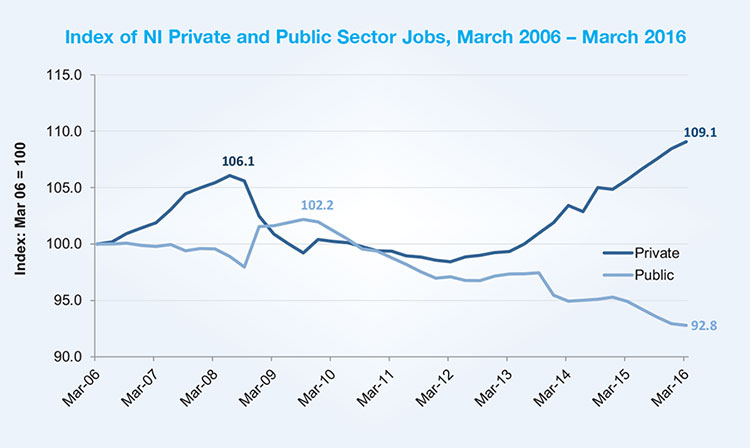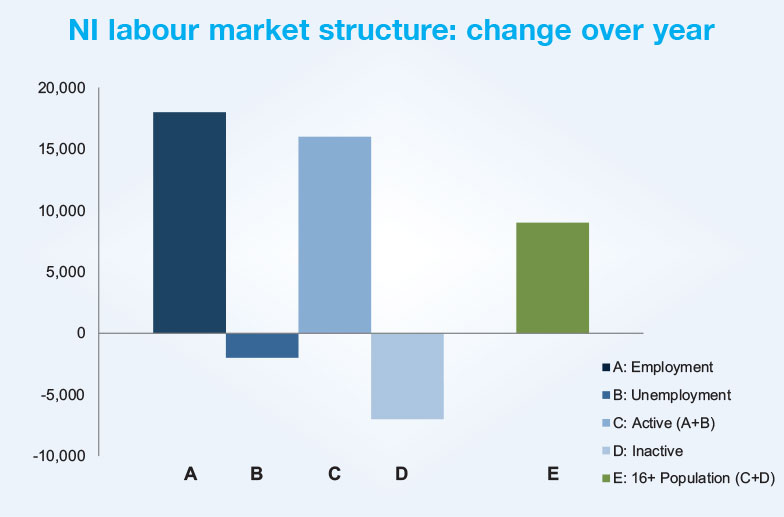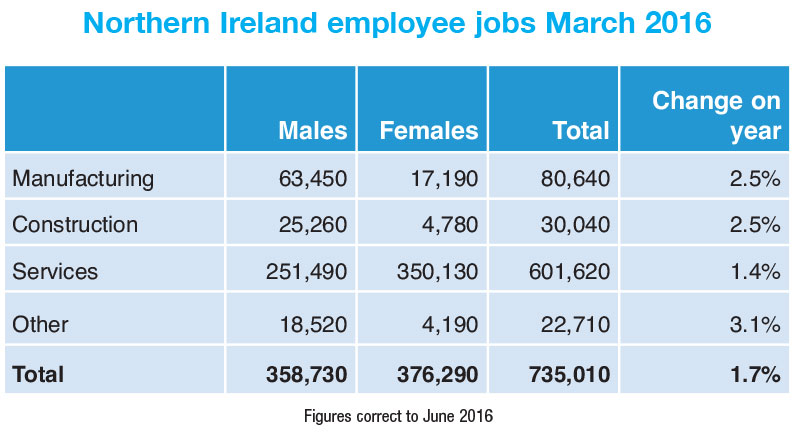Labour Market Report
 Northern Ireland is enjoying its highest employment rate and a record high of economic activity as latest annual figures show but the unemployment rate and level of economic inactivity remain noticeably higher than the UK average.
Northern Ireland is enjoying its highest employment rate and a record high of economic activity as latest annual figures show but the unemployment rate and level of economic inactivity remain noticeably higher than the UK average.
An estimated 51,000 people are currently registered as unemployed in Northern Ireland, 2,000 less people than at the same time last year. The unemployment rate for Northern Ireland has fallen by 0.4 per cent in the last year, meaning that levels of unemployment are still significantly higher than the UK average but below averages in the European Union and Republic of Ireland. The percentage of people who have been unemployed for one year has dropped by 14.3 per cent but remains almost double the UK average. The percentage of 18 to 24 year olds unemployed dropped 5.9 per cent to 13.4 per cent for the year.
Overall economic activity in Northern Ireland rose slightly by 1.2 per cent over the year, meaning that an estimated extra 14,000 people between the ages of 16-64 were economically active and bringing the current total of economically inactive to an estimated 304,000. Economic inactivity in Northern Ireland remained significantly higher than the UK average and rates as the highest of the UK regions.
The annual claimant count in Northern Ireland fell by 6,600 over the year to May. Currently 37,200 people (4.2 per cent of the workforce) claim unemployment-related benefits, a 15.1 per cent drop from last year’s annual figures. The level of under 25s claiming benefits decreased by 19.7 per cent to 8,800 over the year, while long-term claimants stood at 13,421, a decrease of over 20 per cent over the year. Locally, all 11 councils in Northern Ireland showed a decrease in claimants throughout the year. Derry City and Strabane (5.9 per cent) and Belfast (4.2 per cent) recorded the highest claimant count but Mid Ulster (29.7 per cent) and Newry, Mourne and Down (21.9 per cent) showed the highest percentage decrease.
The Department for the Economy recorded a 36 per cent increase in proposed redundancies in the last year (4,874) and a 74 per cent in confirmed redundancies (3,202). Outstanding redundancies (2,627) is currently 34 per cent higher than at the same time last year. The majority of confirmed redundancies occurred in the manufacturing sector (1,205) and a further 584 occurred in wholesale and retail trade; repair of motor vehicles and motorcycles. A further 10 per cent of all redundancies (309) took place in the financial and insurance activities sector.

The current Northern Ireland Employment rate for 16 to 64 year olds is 841,000 (69.6 per cent), an increase of 18,000 (1.5 per cent) over the year. Of those employed, around 54 per cent (453,000) are male and 46 per cent (388,000) are female. Both the female and male rate of employment rose by slightly over 1 per cent in the last year. There was an estimated increase of 11,930 (1.7 per cent) jobs throughout the year, jobs in the private sector increased by 3.2 per cent but the public sector saw a drop of 2.2 per cent. The 51,753 job vacancies in 2015/16 was a 5 per cent decrease against 2014/15.
In terms of earnings, the average weekly wage for all employees rose by 5.3 per cent compared to a 1.9 per cent increase in the UK. Full-time employees witnessed the largest annual percentage increase in earnings since 2004, a 5.4 per cent increase. Part-time weekly earnings also rose by over 5 per cent since 2004.







